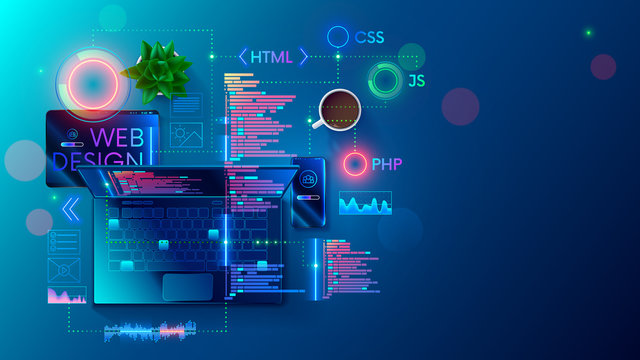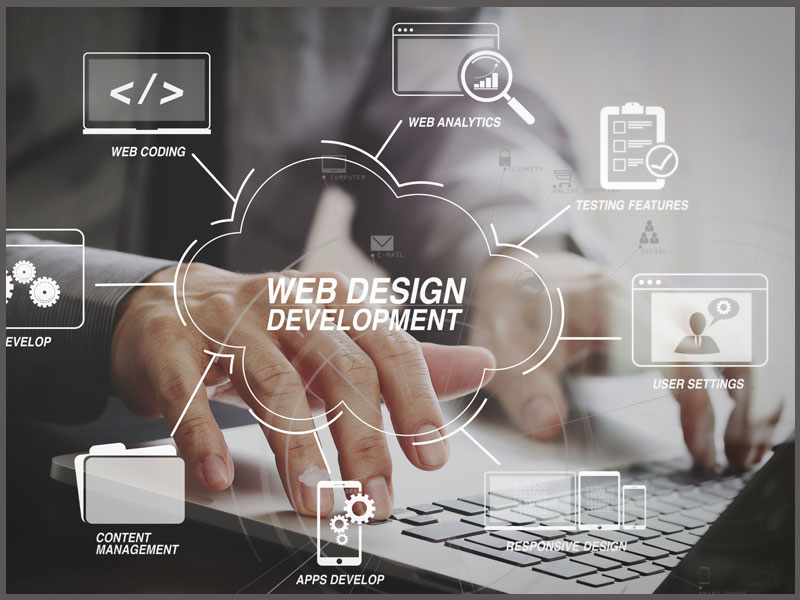Customized Aligned Position Web Design: Unique Web Designs That Reflect Your Brand’s Identity
Customized Aligned Position Web Design: Unique Web Designs That Reflect Your Brand’s Identity
Blog Article
The Ideal Types of Web Layout to Boost Customer Experience and Involvement
In the ever-evolving landscape of digital communication, the performance of website design dramatically impacts customer experience and involvement. Numerous layout techniques, such as minimalist, responsive, and interactive layouts, each offer special advantages that can provide to diverse individual needs. Recognizing which sorts of website design ideal offer these goals can be crucial for services aiming to improve customer fulfillment and retention. Nonetheless, the concern remains: which design elements absolutely reverberate with users and foster significant interaction? The exploration of these concepts discloses vital understandings that may redefine your method to website design.
Minimalist Web Style
As digital landscapes end up being progressively messy, minimal Web design has actually become an effective strategy to boosting user experience. This design approach prioritizes simpleness, focusing on essential aspects while getting rid of unnecessary interruptions. By utilizing adequate white space, uncomplicated navigation, and a limited color scheme, minimal design promotes quality and guides user interest to key web content.
The core principle of minimalist website design is to produce a seamless interaction for individuals. By decreasing cognitive tons, customers can promptly realize info without really feeling overwhelmed. This straight approach not only improves usability but additionally motivates engagement, as site visitors are more probable to check out a site that is easy and visually appealing to navigate.
Additionally, minimalist style frequently stresses typography and images, making use of these elements tactically to convey messages successfully. In essence, minimal Web style is not simply a trend; it is a thoughtful technique that acknowledges the relevance of user-centered layout.
Responsive Web Design
In today's varied electronic environment, receptive Web layout has actually ended up being crucial for producing a seamless customer experience across a wide range of gadgets. As users access sites on mobile phones, desktops, laptop computers, and tablet computers, the capability of a website to adjust its format and web content to different display sizes and resolutions is crucial.
Receptive Web style uses adaptable grids, pictures, and CSS media queries to guarantee that Web content exists optimally, regardless of the device made use of. This approach not only boosts the aesthetic appeal of an internet site however also significantly boosts usability. Customers are most likely to engage with a website that supplies a regular experience, as it eliminates the stress of needing to zoom in or scroll exceedingly.
In addition, online search engine, including Google, focus on mobile-friendly sites in search positions. By embracing receptive style, companies can boost their exposure and reach a more comprehensive target market. This method additionally simplifies website upkeep, as a single version of the website can accommodate all gadgets, reducing the requirement for several variations. In summary, receptive Web design is a fundamental practice that improves customer experience, interaction, and total fulfillment.
Interactive Web Layout
Receptive Web layout lays the foundation for improving user experience, but interactive Web layout takes this an action further by involving individuals in a much more dynamic means - Aligned Position Web Design. By integrating aspects such as animations, clickable models, and real-time feedback, interactive website design mesmerizes individuals, drawing them into a richer browsing experience
This strategy not just cultivates involvement yet likewise motivates users to discover material proactively as opposed to passively eating it. Strategies such as gamification, where customers gain incentives for finishing jobs, can dramatically enhance the time invested in a website and improve total fulfillment. In addition, interactive attributes can streamline intricate details, making it more absorbable and enjoyable.

Including interactive style aspects can additionally bring about greater conversion rates, as individuals are more probable to engage with a site that proactively entails them. Aligned Position Web Design. Eventually, interactive Web style transforms user experiences right into remarkable trips, guaranteeing that site visitors return time after time
Apartment Design
Characterized by its minimalistic method, flat design highlights simplicity and performance, removing unnecessary aspects useful link and focusing on important functions. This layout philosophy prioritizes use, ensuring that individuals can browse user interfaces easily and performance. By using a tidy visual, level style gets rid of the clutter commonly discovered in a lot more elaborate styles, thereby enhancing customer emphasis on content and functionality.
The characteristic of level design depends on its use bold shades, simple typography, and geometric shapes. These aspects add to an aesthetically appealing interface that is both approachable and modern. In addition, level design cultivates a sense of clearness, allowing customers to determine vital actions and details without disturbance.
Furthermore, flat layout is particularly efficient in receptive Web style, as its simpleness translates Visit Website well across various tools and screen dimensions. By concentrating on crucial functions, level style not just meets user needs however additionally motivates smooth communication, making it an essential part of efficient Web design techniques.
Adaptive Website Design
Flexible Web design personalizes the individual experience by developing numerous fixed layouts tailored to different screen sizes and tools. Unlike receptive layout, which fluidly adjusts a single design, flexible style uses distinct formats for specific breakpoints, guaranteeing optimum presentation on various platforms. This technique permits developers to focus on the distinct attributes of each tool, improving usability by delivering specifically what users require based upon their context.
Among the key get more advantages of flexible Web design is its ability to maximize lots times and performance. By offering customized content and photos that fit the customer's gadget, internet sites can decrease information usage and boost loading rates. This is particularly helpful for individuals with slower connections or minimal data strategies.

Furthermore, adaptive design helps with a more controlled and consistent branding experience. Considering that designers create numerous designs, they can guarantee that the visual elements straighten with the brand's identity across various platforms - Aligned Position Web Design. This results in a cohesive customer experience, boosting interaction and promoting user retention
Conclusion
Minimal design cultivates quality and focus, while responsive style ensures flexibility across different gadgets, advertising ease of access. Collectively, these style comes close to add to the creation of easy to use atmospheres that not just improve fulfillment yet additionally drive higher conversion rates, underscoring their vital importance in contemporary Web design techniques.

Minimal design fosters quality and emphasis, while responsive design guarantees adaptability across various devices, advertising accessibility. Collectively, these layout comes close to contribute to the creation of easy to use atmospheres that not only enhance complete satisfaction yet likewise drive higher conversion rates, highlighting their important importance in modern Web design methods.
Report this page